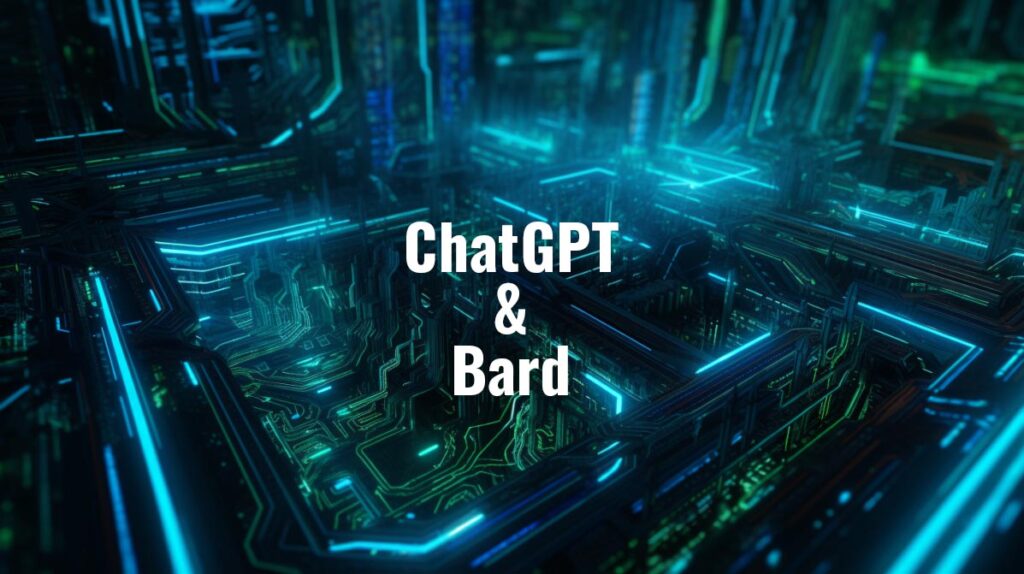
In the dynamic landscape of artificial intelligence (AI), ChatGPT and Bard have emerged as impressive large language models (LLMs). Each has been developed by renowned organizations—OpenAI and Google AI, respectively. Their capabilities stretch beyond generating text and translating languages; they can also craft a wide array of creative content and respond to inquiries with a depth of understanding. However, the unique attributes and capabilities of each model make them distinct from each other.
An introduction to the two biggest players:
ChatGPT: OpenAI’s GPT-4 Powered Marvel
ChatGPT, developed by OpenAI, has been advanced to utilize the GPT-4.0 language model, demonstrating a significant leap from its previous version. This cutting-edge model, introduced in 2023, is trained on an extensive dataset of text and code, showcasing its capability to handle a wide variety of tasks despite being under continuous development.
Beyond its ability to follow instructions and fulfill requests with a high degree of attentiveness, GPT-4’s ChatGPT can access the internet, a unique feature that enhances its relevance and capacity to provide updated information. This model also stands out for its comprehensive and informative responses to questions, even those that are open-ended, complex, or unconventional. Creatively, it excels at generating various text formats, from poems, code, and scripts to musical pieces, emails, and letters.
Bard: Google AI’s Entry in the LLM Field
Bard, released by Google AI in 2023, is another significant player in the LLM field. It has been trained on an enormous dataset of text and code, enabling it to learn and adapt its capabilities. Like ChatGPT, Bard is in continuous development, but it has already shown promise in a range of tasks.
Bard demonstrates a remarkable ability to understand and execute instructions, providing thoughtful responses to a wide array of inquiries. It adeptly tackles open-ended, complex, or unusual questions, highlighting its rich understanding of various subject matters. Additionally, Bard showcases its creativity by generating diverse text content, whether it’s scripting, coding, creating lyrical poems, or drafting emails and letters.
ChatGPT and Bard: A Comparative Analysis
ChatGPT and Bard share commonalities, including their extensive training datasets and the ability to handle a myriad of tasks. However, there are notable differences between them.
One key distinction is the temporal nature of their training data. While ChatGPT’s training data includes text and code collected until 2021 and can access the internet for up-to-date information (with the latest experimental update), Bard’s training data is updated in real time, offering access to the latest information through its own internal processes.
The underlying language models employed by ChatGPT and Bard also differ. While ChatGPT operates on the advanced GPT-4.0 model, Bard uses Google’s LaMDA language model. This fundamental divergence could result in variations in the type of text they generate and how they approach answering questions.
The Everyday Uses of ChatGPT and Bard AI LLMs
The practical applications of ChatGPT and Bard extend into numerous facets of daily life, revolutionizing how we interact with technology and information.
In the realm of personal assistance, both ChatGPT and Bard can function as advanced virtual assistants, managing tasks such as scheduling, reminders, or even drafting and sending emails. They can also serve as tutors or study aids, providing detailed explanations on a wide range of topics, from complex scientific concepts to historical events, and even coding tutorials.
The creative potential of these LLMs is equally impressive. They can aid in content creation, generating blog posts, articles, or social media content based on provided guidelines. Their aptitude extends to creating poetry, stories, and scripts, making them useful tools for writers and artists alike. Musicians and composers can leverage these models to generate musical pieces or song lyrics.
In business settings, ChatGPT and Bard can be employed to automate customer support, providing accurate and informative responses to customer inquiries. They can also assist in drafting business documents or reports, and even analyze data to provide insights.
The ability of ChatGPT to access the internet adds another layer of functionality. It can pull in real-time data to provide updated news summaries, stock market updates, or even the latest scientific research. This feature also enables ChatGPT to function as a sophisticated research tool, pulling in information from various online sources to answer complex queries or provide in-depth explorations of specific topics.
The Evolving Story of LLMs: ChatGPT and Bard
ChatGPT, powered by GPT-4.0, and Bard symbolize the significant progress in the field of large language models. The addition of internet access to ChatGPT provides an innovative edge in delivering up-to-date information, while Bard’s real-time data updates also maintain its relevance in the face of current events. The unique language models they employ contribute to the diversity of text outputs and the distinct manners in which they handle queries. As powerful tools in the AI domain, ChatGPT and Bard showcase unique strengths that can be tapped for an extensive range of applications, reflecting the ongoing evolution of artificial intelligence.








